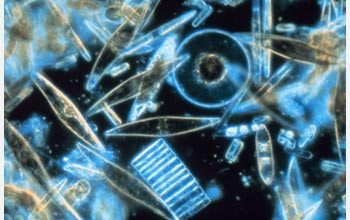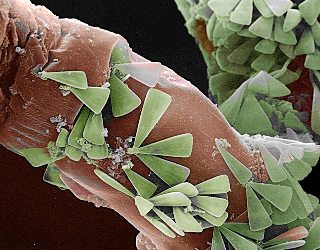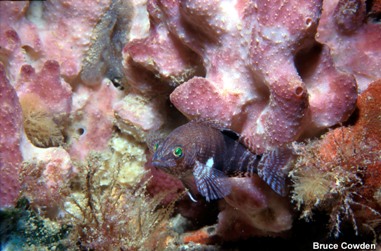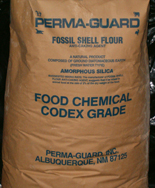
Interactions
Within, the base interaction for all
Diatoms specie is that they function as the base of their food
webs. This is because they are extremely prevalent and efficient
primary producers, contributing an estimated 20 to 25 percent of
the World’s net primary production every year. There are very
few species that for symbiosis with other organism though, but
they do hold a large amount of human interests in various ways.

When it comes to symbiosis Diatoms they are in short supply.
However, some species do form a unique symbiosis with polar
sponges. The species are almost always pennale, benthonic,
species of diatoms. The symbiosis consists of two parts: a
mutualism and a parasitism. The two parts will vary on time of
year and the location in which the sponge is growing. If the
diatom has enough light it will grow without any problems and
will produce extracellular sugars that the sponge can feed on,
well the sponge provide protection to the diatom. Well if there
isn’t enough light present then the diatom begins to consume the
sponge to prevent itself from going into a vegetative state. For
th e diatom becoming a parasite allows it to just continuing to
grow without any problems but it also requires energy to consume
the sponge that it is living in. So if enough light is present
it will follow through and photosynthesis because it is what is
best for it. When it all comes down to it, the sponge doesn’t
matter to the diatom, they produce the extracellular sugars
anyway, with the sponge though, there is less threat of
predation and no risk of being forced into an unproductive
vegetative state. (Also in Nutrition)
e diatom becoming a parasite allows it to just continuing to
grow without any problems but it also requires energy to consume
the sponge that it is living in. So if enough light is present
it will follow through and photosynthesis because it is what is
best for it. When it all comes down to it, the sponge doesn’t
matter to the diatom, they produce the extracellular sugars
anyway, with the sponge though, there is less threat of
predation and no risk of being forced into an unproductive
vegetative state. (Also in Nutrition)
Then as human interests go they have very diverse
possibilities.
The mos t common at uses by humans at this point in time is in
the form of diatomaceous earth, which is fossilized diatoms,
which is used as: a dietary supplement, filtration agents, used
in paints to causes it to sparkle, some abrasives and some more.
t common at uses by humans at this point in time is in
the form of diatomaceous earth, which is fossilized diatoms,
which is used as: a dietary supplement, filtration agents, used
in paints to causes it to sparkle, some abrasives and some more.
Recently though diatoms have expanded beyond diatomaceous
earth for humans to use them. At Oregon State University and
Portland State University diatoms have been used to increases
the likely hood that light would be trapped in solar panels.
Possibly increasing a new form of solar panel effectively by
three times. The new solar panels worked by having a
photosensitive dye on it along with some tita nium on it. The dye
when hit my light releases electrons that the titanium takes up
to great an electrical current. They researchers first
effectively replaced silicon dioxide with titanium dioxide
causing the frustules to be made out of titanium instead of
silicon. Then the organic material is removed from the diatoms
and the titanium frustules are in the panel with the dye and the
idea is that the frustules would increase the likely hood that
the light would come in contact with the dye because the
frustules could also trap the light. This did work and did
increase the panels effectively by roughly three times. With the
use of diatoms it allows cheaper more effective solar cells
compared to the previously used silicon cells that were also
environmentally unsound.
nium on it. The dye
when hit my light releases electrons that the titanium takes up
to great an electrical current. They researchers first
effectively replaced silicon dioxide with titanium dioxide
causing the frustules to be made out of titanium instead of
silicon. Then the organic material is removed from the diatoms
and the titanium frustules are in the panel with the dye and the
idea is that the frustules would increase the likely hood that
the light would come in contact with the dye because the
frustules could also trap the light. This did work and did
increase the panels effectively by roughly three times. With the
use of diatoms it allows cheaper more effective solar cells
compared to the previously used silicon cells that were also
environmentally unsound.
Humans are also interested in diatoms because
of the possibility of using them as a fuel source. It is starting to
be put into development to use diatoms to produce a sustainable
carbon natural energy source. This oil can be used to run cars and
power plants without taking up a large amount of space or using food
crops as an energy source. With a little genetic engineering they
could be modified to secrete the oils much as they do with many
polysaccharides. This way they oil that they produce can be
harvested daily. This way they don’t have to be destroyed to harvest
the oil allowing the process to occur extremely quickly and at a
constant rate. (For more on diatoms as an energy source
http://www.ias.ac.in/currsci/sep252009/748.pdf)
Only the beginning of the realization of what diatoms can be
used for.
To Facts